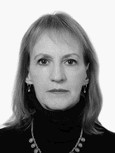Comparative analysis of the levels of difficulty of spins in the competitive programmes of women's singles figure skating representatives in the 2022-2023 season
Keywords:
single figure skating; free programs; coordination complexity of rotations; features used to evaluate difficulty levels.Abstract
Objective of the study was to determine the content of features and levels of complexity of rotations in the competitive programs of women's single figure skating in the 2022-2023 season.
Methods and structure of the study. At the 58th Congress of the International Skating Union (ISU), held on May 4, 2022 in Lausanne (Switzerland), the requirements of the competition rules for the difficulty levels of elements in figure skating were traditionally updated. The changes adopted were the most significant since the beginning of the modern judging system for awarding difficulty levels in spins and came into effect from the 2022-2023 season. For the first time, a separate group was allocated, consisting of six additional traits to achieve a maximum fourth level of difficulty (level 4), and Previously, it was enough to fulfill any features from the list. In accordance with the requirements for the content of programs in figure skating, in the short and free programs of single skating, the execution of three different rotations is prescribed, and therefore, in order to comply with the requirement prohibiting the counting of repeated features, in all three rotations it is necessary to show mastery of three features from list of those required to obtain the highest possible level 4. Thus, many athletes were faced with the task of mastering new complex variations for all rotations of high coordination complexity.
Results and conclusions. The article presents the results of a comparative assessment and analysis of the frequency of use (%) of mandatory features for level 4 rotations in free programs of representatives of women's single skating in the 2022-2023 season. at the I and II stages of the Grand Prix among juniors, in the Final of the Grand Prix series among adults and juniors, as well as at the Russian Championship.
References
Zhgun Ye.V., Smirnova A.V., Danitskaya V.A., Abolymova A.O. Koordinatsionnaya slozhnost vrashcheniy v sorevnovatelnykh programmakh figuristov yuniorov s uchetom izmeneniy trebovaniy v sisteme sudeystva ISU v sezone 2022-2023. Aktualnyye problemy sportivnoy podgotovki v konkobezhnom sporte, short-treke, figurnom katanii na konkakh. Proceedings national scientific-practical conference dedicated to the 50th anniversary of the Department of Theory and Methodology of Speed Skating, Chelyabinsk, November 10, 2022. Chelyabinsk: Uralskiy gosudarstvennyy universitet fizicheskoy kultury publ., 2022. pp. 113-118
Federatsiya figurnogo kataniya na konkakh Rossii: Pravila vida sporta «Figurnoye kataniye na konkakh». [Electronic resource]. Available at: https://fsrussia.ru/files/docs/fs_rules_rus_28_09_23_690.pdf. (date of access: 10.01.2024).
ISU Communication 2474 Single & pair skating Levels of Difficulty and Guidelines for marking Grade of Execution and Program Components, Season 2022/23. [Electronic resource]. Available at: https://isu.org/inside-isu/isu-communications/communications/28330-isu-communication-2474/file (date of access: 15.01.2024).
ISU Communication 2494 Some changes in General, Special Regulations and Technical Rules accepted by the 58 th ISU Congress 2022. [Electronic resource]. Available at: https://www.isu.org/inside-isu/isu-communications/communications/28951-isu-communication-2494/file (date of access: 17.01.2024).


